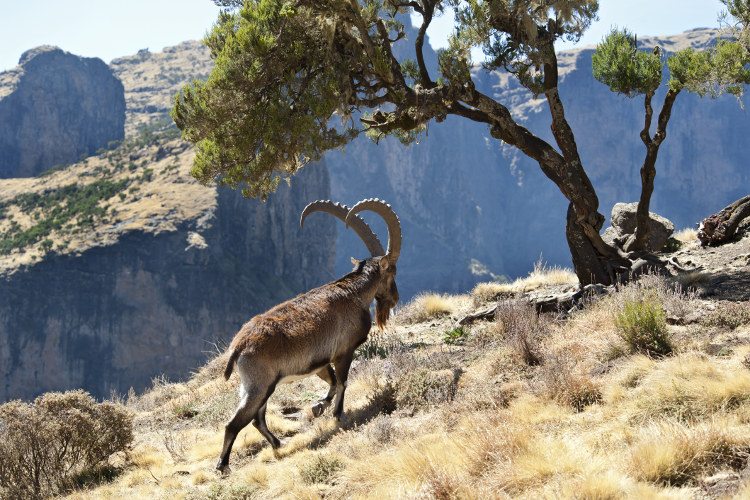A short stroll from the lodge and you're quickly enveloped in a thick forest. Pick your way past the huge knarled trees, clumps of moss, and pink, bell-shaped flowers, gently pushing looped vines out of your path, until you suddenly find yourself in a wide clearing. And it’s here, if you’re lucky, you might just find some of the planet's rarest creatures.
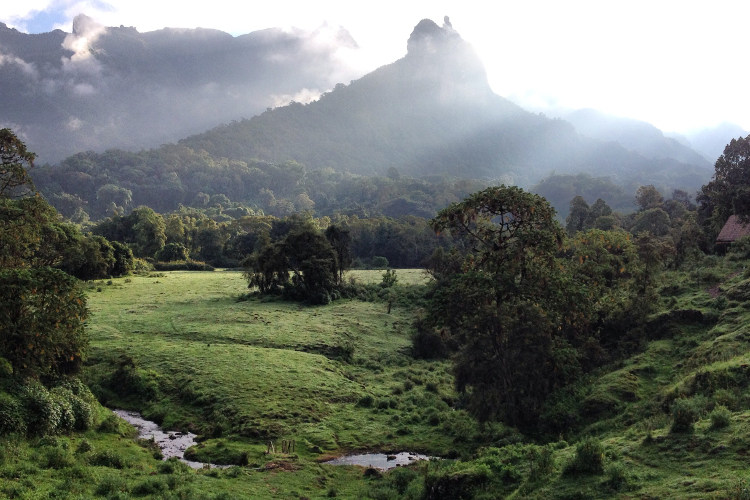
This particular clearing is in the park's Harenna Forest, which is the largest cloud forest in the country. Solemn-faced colobus monkeys with bright white beards swing in the trees, looking after their babies and letting out the occasional hoot. Keeping them company are the noisy silver-cheeked hornbills, Abyssinian oros, with their cheerful, bubbly call, starlings and iridescent tacazze sunbirds. Down on the ground (keeping a careful distance from human visitors), a family of giant forest hogs snuffle about in the grass. Butterflies flit about and the odd bushbuck picks its way quietly through the undergrowth. You half expect Snow White to come skipping out into the sunshine with a couple of cute squirrels in tow.
Travelling to Africa for wildlife usually means one thing and one thing alone: Big Five spotting in one of the continent’s well-loved safari parks. But for anyone that wants to get further off the beaten track, Ethiopia is incredibly rewarding. Its unusual geography, particularly the more isolated regions such as those within the Bale Mountains National Park, means there is a high number of endemic species and the very real possibility of glimpsing species that only a handful of people have ever seen. Here are just some of the creatures you could encounter while you're there.
Gelada monkeys
Gelada monkeys, which only live in the Simien Mountains, are a completely intriguing species. They're the only grass-grazing monkeys left, and of all primates, have one of the most varied range of sounds, from high-pitched cries to gurgling that sounds almost like human speech. Elsewhere in Ethiopia you'll be able to spot black-and-white colobus monkeys with their snowy mantles, and Bale monkeys, who also have white beards.
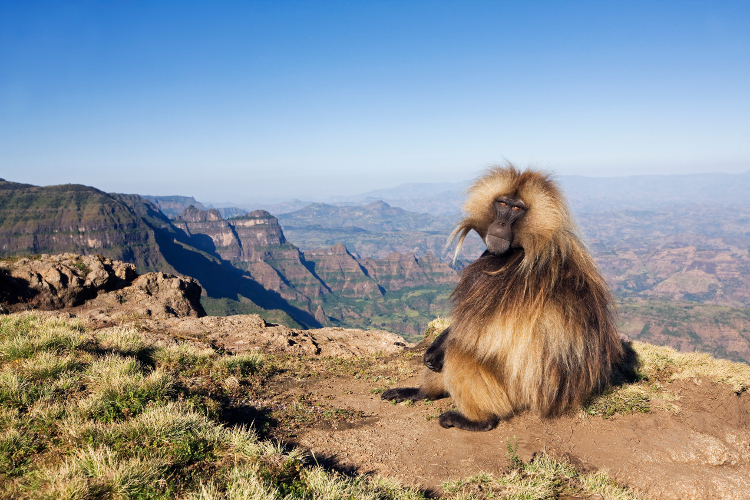
Birds
Ethiopia is gradually becoming known one of Africa’s top birding destinations and the numbers really speak for themselves – there are no less than 835 bird species found in Ethiopia, with an incredible 23 that are unique to the country. Serious birders may want a guide to help them spot and identify rare species, but even to travellers with a completely untrained eye, catching a glimpse of electric-bright feathers or hearing huge wings beating overhead during a forest walk is an undeniable thrill. Keep your eyes peeled for the red-cheeked cordon bleu, Ethiopian guinea fowl and the endemic blue-winged goose. It's your ears that may twig you to the arrival of a bearded vulture soaring overhead in Simien Mountains National Park – their wings are so enormous that the wind almost whistles as it flows over them. Lake Awasa, in the Main Ethiopian Rift south of Addis Ababa, is home to some magnificent, prehistoric-looking marabou storks, while Lake Shala, to the north of Awasa is the place to go to see flamingos.
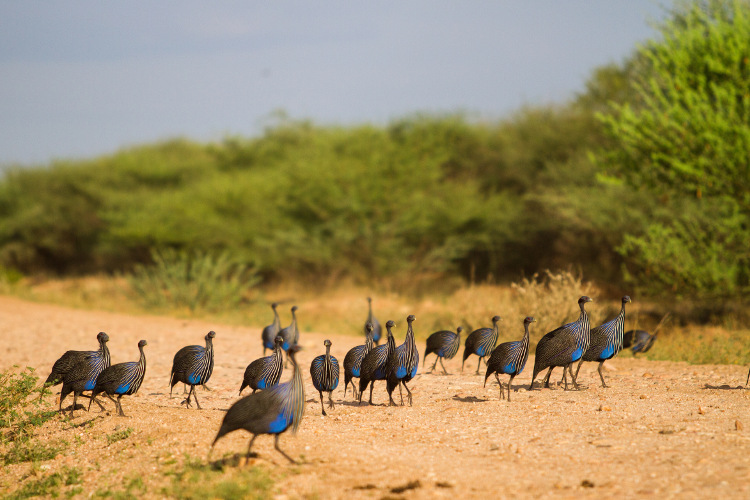
Hyenas
The ancient walled city of Harar attracts travellers primarily to see its heritage buildings and shrines, but it's also a great place to get up close and personal with wild hyenas. The tradition of feeding hyenas in Harar began as a way for farmers to prevent them attacking livestock and later was considered to bring good luck. Nowadays it's a full-blown tourist activity – 'hyena men' set themselves up around the city walls as night falls, and gradually the hyenas come out of the shadows to be fed. You can watch for a small fee, and if you're feeling brave, they'll even let you try doing it yourself. Nerve-wracking it might be, but feeding Africa's second-largest predator here is considered perfectly safe by locals.
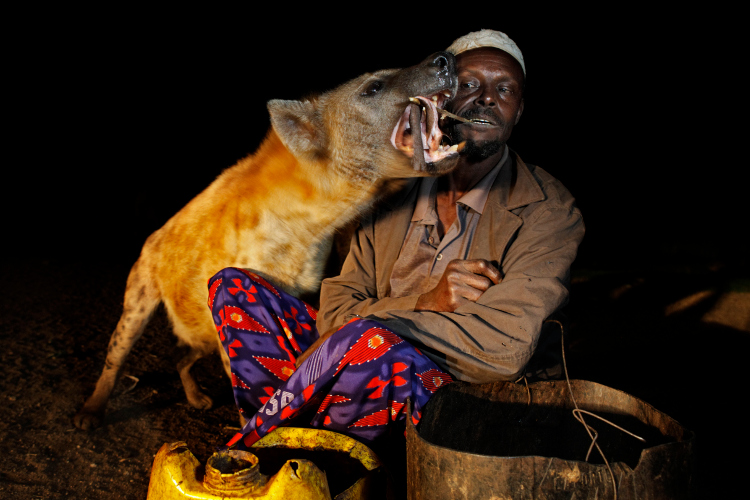
Ethiopian wolves
The Ethiopian wolf is the rarest canid in the world, with less than 500 left in the wild. You've got the best chance of seeing one of these glossy-coated creatures in the Bale Mountains National Park, where 60% of the population now live. Sometimes referred to as Abyssinian foxes, they have rich red fur and pointy ears and long legs, and do actually resemble a fox more than a typical wolf. They often go foraging alone for food, so if you're lucky, you might just catch a glimpse of one wandering across Bale's Sanetti Plateau.
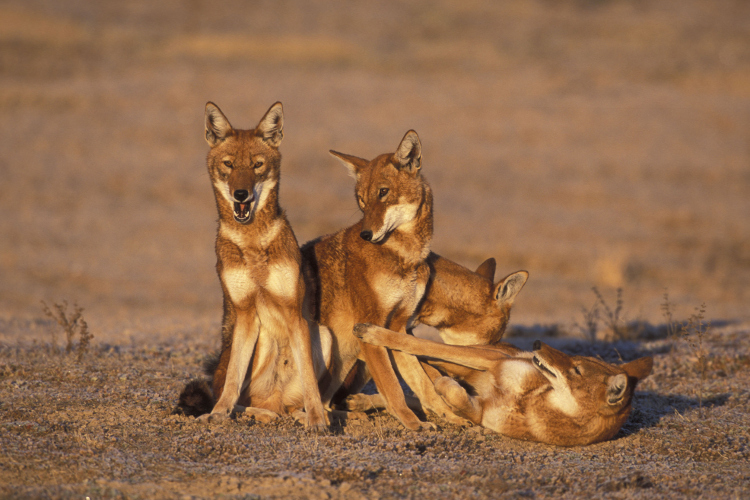
Butterflies
The Bale Mountains National Park is also best for butterfly spotting, because as one researcher who works at Bale Mountain Lodge put it, “It’s an endemic utopia.” As many as 22,000 different species of butterflies and moths exist in the region, often in eye-popping colours and patterns. New-to-science species are being discovered on a regular basis, with more than 20 recorded already after recent research. There are even high hopes for a sustainable local silk industry to launch soon, after it was found that silk moths are also living in the area.
Walia ibex
Like the gelada, this endangered species is found in the highlands of northern Ethiopia, with the highest concentration of numbers living in the Simien Mountains. The males have distinctive black beards and sport ridged horns that arch backwards and reach lengths of over a metre. The latter are used in impressive head-on-head battles of dominance with other males; the sharp cracks of clashing of horns often reverberates through the thin mountain air. The confrontations can take place on impossibly steep slopes and the results can mean life or death.
